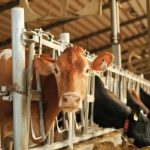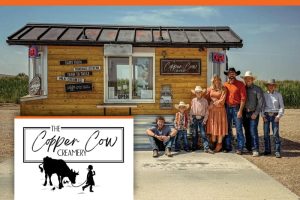
The U.S. dairy industry is undergoing a massive transformation, with the number of dairy farms down 95% since the 1970s. While over 648,000 dairy farms operated in the U.S. in 1970, only 24,470 remained by 2022. Although farm numbers have fallen, herd sizes have increased, with more than 60% of milk production now concentrated on farms with over 2,500 cows.
The impact of this consolidation is being felt across rural communities, as smaller farms struggle to compete and local economies face the consequences of fewer operations. Milton Orr, an agriculture adviser in northeast Tennessee, noted, “I remember when we had over 1,000 dairy farms in this county. Now we have less than 40.” Today, Greene County has only 14 dairy farms, reflecting a national trend of consolidation.
Pricing Challenges
A key factor in the decline of small dairy farms is the Federal Milk Marketing Orders (FMMO) system, established in 1937 to regulate milk pricing based on its end use. Milk prices are categorized by classes: Class 1 (bottled milk), Class 2 (yogurt), Class 3 (cheese), and Class 4 (butter and powdered dry milk). While Class 1 traditionally commands the highest price, improvements in milk production, transportation, and processing have led to increased milk supply and a reduction in prices.
Fr om 2005 to 2020, milk sales income averaged $18.57 per 100 pounds of milk, while production costs averaged $25.80 per 100 pounds, leading to consistent financial losses for dairy farmers. Rising costs for cattle feed, labor, veterinary care, and equipment have further squeezed margins. This has made it difficult for smaller operations to compete with larger farms that can leverage economies of scale and invest in cost-saving technologies like robotic milking systems and precision farming tools.
Regional Disparities and the Struggle for Survival
The pricing system also varies by region, with certain areas more dependent on higher-priced Class 1 milk. Farmers in regions like the Southeast and Appalachia, wh ere bottled milk is more prevalent, have been particularly vulnerable to pricing shifts. In contrast, areas producing more cheese and butter, such as the Upper Midwest, have benefited from more stable prices.
Larger farms and cooperatives like Dairy Farmers of America have weathered these challenges better by utilizing tools such as forward contracting and hedging against price fluctuations. However, smaller farms face an uphill battle, with many unable to cover production costs.
The Family Farm Legacy and Succession Challenges
Despite the economic pressures, 97% of U.S. dairy farms remain family-owned, with many farmers continuing operations out of a deep sense of heritage. Yet, transitioning these farms to the next generation poses significant challenges. The average age of U.S. farmers is now 58, and only 9% are under the age of 34. Succession planning remains a major hurdle, with only 53% of dairy farmers having identified a successor to take over the business.
The Future of Dairy: Reform and Innovation
The ongoing reforms to the FMMO aim to better reflect modern production capabilities and address the cost disparities in milk production. Proposed changes include adjustments to how Class 1 milk is valued and updates to the support processors receive for key dairy products. The goal is to bring milk prices more in line with the cost of production, which could help stem the tide of farm closures.
Additionally, the U.S. Department of Agriculture (USDA) is supporting four Dairy Business Innovation Initiatives, which aim to help dairy farmers remain competitive through grants, research, and technical assistance. These programs are designed to support farmers in modernizing their operations and developing new revenue streams.
Direct-to-Consumer Solutions
For some farms, transitioning to value-added or farmstead dairy operations offers a path forward. These businesses process and sell milk, cheese, and other dairy products directly to consumers, bypassing the traditional supply chain. However, this model comes with its own risks, as it requires farmers to manage not only production but also processing and marketing.
As the dairy industry continues to evolve, the future of America’s small dairy farms depends on a combination of market reforms, innovation, and consumer support for local operations. Without significant changes, the trend of consolidation is likely to continue, leaving fewer but larger farms to meet the nation’s demand for dairy products.
You can now read the most important #news on #eDairyNews #Whatsapp channels!!!
🇺🇸 eDairy News INGLÊS: https://whatsapp.com/channel/0029VaKsjzGDTkJyIN6hcP1K

























